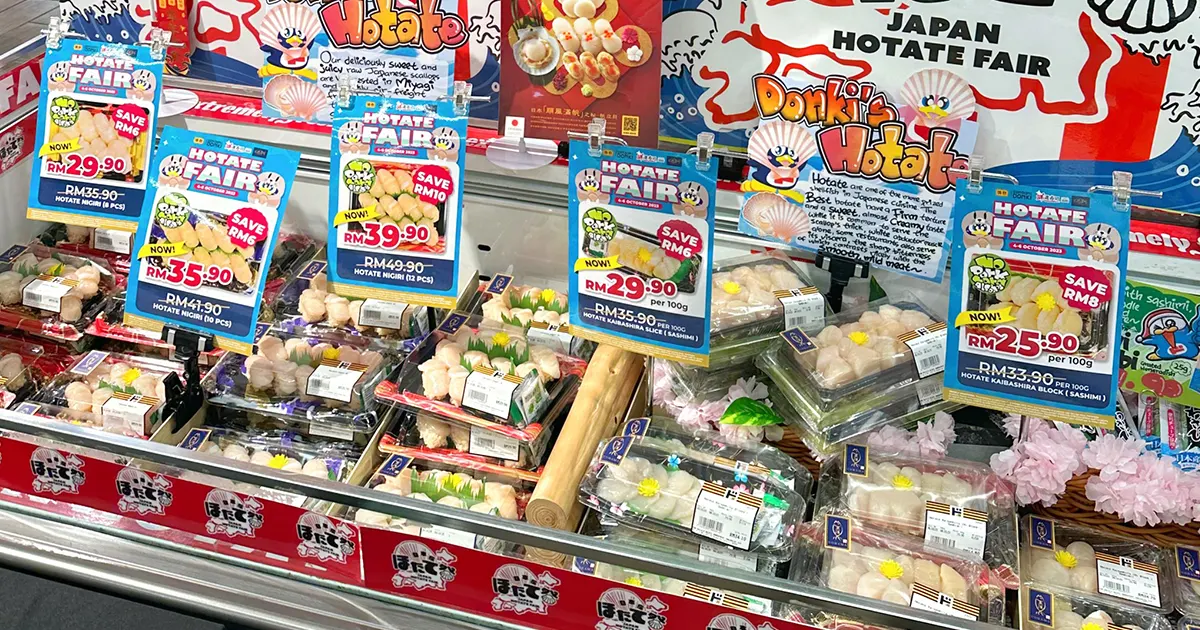15-10-2023 (KUALA LUMPUR) Tokyo is intensifying efforts to expand its seafood exports to Southeast Asia in an attempt to mitigate the impact of a total ban imposed by China and Hong Kong following the release of treated wastewater from the destroyed Fukushima nuclear power plant. In response to China’s ban on Japanese marine products, Japan has set up a 20.7 billion yen (US$139 million) emergency fund to support its seafood exporters. The move by China came after Japan discharged 7,800 tonnes of treated water from the Fukushima plant into the Pacific Ocean, despite opposition from fishing groups and protests in South Korea. Japan plans to aggressively promote its seafood exports in Southeast Asia through food fairs and exhibitions, aiming to counter the negative perception caused by China’s ban. However, consumer concerns about the safety of Japanese seafood may pose a challenge to Japan’s efforts.
The news of the Fukushima wastewater release and China’s ban on Japanese seafood has affected consumer confidence. Teo Wenya, a Singaporean housewife, expressed her distrust in the radioactivity tests conducted by Japan and decided to avoid Japanese seafood. Instead, she now prefers Norwegian salmon.
To bolster exposure and interest in its seafood, Japan intends to organize an increasing number of food fairs and exhibitions in target markets. Ichiro Miyashita, Japan’s Minister of Agriculture, Forestry, and Fisheries, emphasized that the safety of Japanese seafood has been confirmed and that exports are conducted following rigorous procedures. Miyashita launched a Japanese scallop promotion at a retail chain store in Kuala Lumpur, Malaysia, earlier this month, highlighting the negligible risk posed by the treated water.

China’s trade restrictions and subsequent ban have severely impacted Japan’s seafood industry. Even before the Fukushima plant released treated wastewater, Beijing had delayed shipments of Japanese seafood. In July, seafood exports to China declined by 23.2% compared to the previous year, marking the first drop since 2021. Mainland China accounted for more than one-fifth of Japan’s total seafood exports, with Japan selling approximately US$600 million worth of seafood to the mainland in 2022. Hong Kong was the second-largest buyer, purchasing US$507 million worth of Japanese seafood.
Amid these challenges, Japan is seeking new markets in Southeast Asia. During bilateral engagement between Japan and Malaysia, Ichiro Miyashita received a positive response regarding Japan’s seafood exports. Malaysian Agriculture and Food Security Minister Mohamad Sabu stated that the Malaysian government has no issues with Japanese seafood imports, as rigorous checks by the fisheries department and health ministry have not raised any red flags. Singapore also expressed confidence in the safety of Japanese seafood, stating that imports have met their food safety standards.
However, there is still a significant gap between China’s seafood purchases and the willingness of countries like Malaysia and Singapore to increase imports from Japan. In 2022, Japan’s total seafood exports to Malaysia amounted to US$23.5 million, less than 4% of China’s spending on Japanese seafood during the same year. Singapore’s food agency reported that Japanese food imports accounted for only 1.5% of the city-state’s total imports over the past decade.
Despite the challenges, expanding seafood exports to Southeast Asia is seen as a natural step for Japan, given the region’s geographical proximity and the growing middle class that can drive demand. Adib Zalkapli, Malaysia Director with political risk advisory BowerGroupAsia, noted that regional countries are less likely to be influenced by geopolitical tensions that do not directly involve them, referring to China’s ban. However, some Malaysian consumers remain cautious about Japanese seafood, emphasizing the need for transparent information and a preference for locally sourced seafood.




